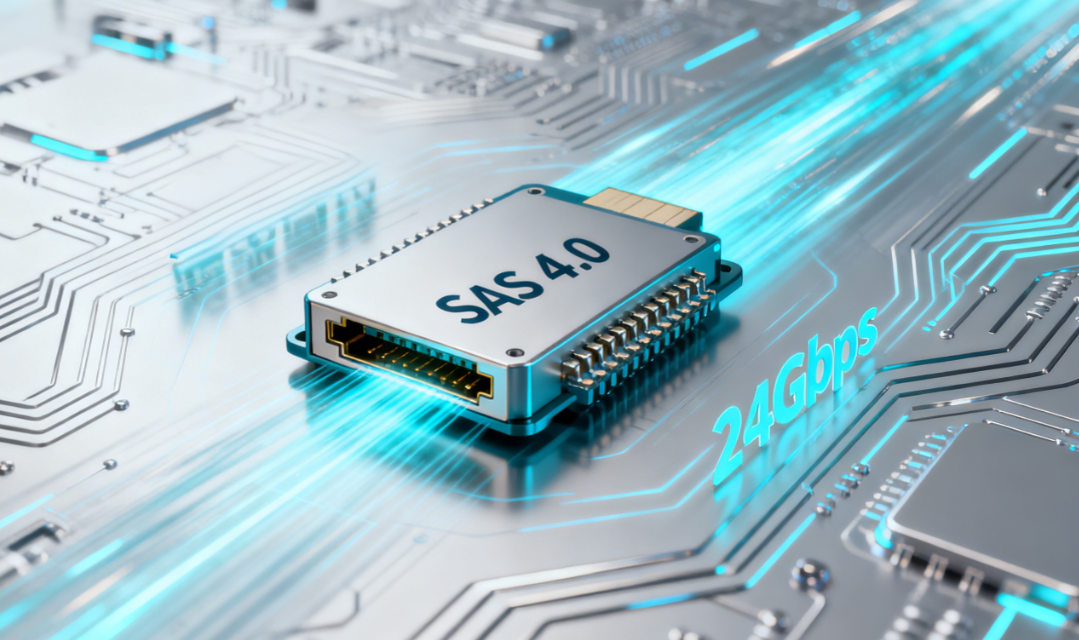From HDD to SSD: How Do SAS Cables Ensure Smooth Acceleration for All-Flash Storage?
In this era of data explosion, enterprise storage systems are undergoing a “flash revolution”—transitioning from mechanical hard drives to solid-state drives. When you invest heavily to upgrade your storage array to a high-performance all-flash array, have you ever wondered—can the “highway” carrying data traffic match the blazing speed of SSDs?
The answer is: If the “road” is chosen incorrectly, even the fastest SSDs may be rendered useless. Today, we're here to give credit where it's due to an unsung yet indispensable “supporting player”—the SAS cable.
Looking Back: SAS Was Already the “Premium Choice” in the HDD Era
During the HDD era, SAS already dominated enterprise storage with its high reliability, dual-port redundancy, and robust scalability. Compared to SATA, SAS resembled a multi-lane, enclosed highway with emergency lanes, supporting full-duplex (bidirectional simultaneous transmission) and point-to-point direct connections to ensure stable and secure critical data flows.
However, HDD performance bottlenecks at the time lay in seek times and rotational speeds. The bandwidth of SAS channels was more than sufficient for HDDs.
Era of Change: All-Flash Arrives, Demanding Ultimate “Road” Performance
When storage media transitioned from “mechanical rotation” HDDs to “electronic pulses” SSDs, the rules of the game changed completely. SSD latency decreased by a hundredfold, while IOPS increased a thousandfold. At this point, any bottleneck in the data channel would be infinitely magnified.
Bottleneck 1: Bandwidth: A single high-performance SSD easily surpasses 1GB/s throughput, quickly outpacing legacy SAS standards like SAS 2.0 (6Gbps).
Bottleneck 2: Latency: With SSDs themselves offering ultra-low latency, any additional overhead from cables or protocols becomes unacceptable.
Bottleneck 3: Stability: All-flash arrays typically serve core databases, virtualization, real-time analytics, and other mission-critical workloads, demanding extremely high signal integrity and reliability from the link.
Using outdated SAS cables or downgrading to SATA cables at this stage is like placing dirt barriers on an F1 track—the SSD's formidable performance simply cannot be unleashed.
Safeguarding Performance: How Next-Gen SAS Accelerates All-Flash?
So how does modern SAS technology step up to safeguard all-flash arrays?
Continuously Evolving Ultra-High Bandwidth: Upgrading from “Country Roads” to “Hyperloop”
SAS technology itself is rapidly evolving:
SAS 3.0 (12Gbps): The mainstream interface for current all-flash arrays, delivering ample single-link bandwidth.
SAS 4.0 (24Gbps): The next-generation standard, doubling bandwidth once more to prepare for future high-performance SSDs.
Through port aggregation, multiple SAS channels can be bundled together, delivering aggregated bandwidth far exceeding that of a single SSD to a single storage controller. This ensures an unobstructed path from the drive to the controller.

Ultimate Signal Integrity: Keeping the “Data Race Car” on Track
SSDs operate at high frequencies and are exceptionally sensitive to signal quality. SAS cables optimized for all-flash storage incorporate significant design and material enhancements:
High-quality shielding: Effectively blocks external electromagnetic interference, preventing signal distortion and bit errors.
Low-loss dielectric materials: Minimizes signal attenuation during transmission, ensuring stability over long distances.
Precision gold-plated connectors: Guarantees secure connections with minimal contact resistance and reduced oxidation risk.
These details collectively ensure that data “race cars” maintain course at high speeds, avoiding ‘crashes’ (errors) caused by “road bumps” (signal jitter).
Rock-Solid Reliability: The Lifeline of Business Continuity
This inherent core strength of SAS is amplified in all-flash environments:
Dual-port architecture: SAS SSDs typically feature two independent ports, connecting to separate storage controllers via dual SAS cables. Even if one controller, port, or cable fails, the system maintains uninterrupted data access through the alternate path, delivering true high availability.
Robust error detection and recovery: The SAS protocol layer incorporates advanced error handling capabilities, promptly identifying and correcting link-layer errors—far surpassing SATA's capabilities.
Unparalleled Scalability: Building Massive All-Flash Storage Pools
SAS's powerful scalability allows connecting dozens or even hundreds of SSDs via Expanders, forming a unified high-performance, large-capacity storage resource pool. This slender SAS cable acts like a highly organized transportation hub, efficiently and orderly integrating all all-flash “acceleration units” to deliver unified, extreme performance externally.
Unseen Details Determine Visible Performance
In the pursuit of ultimate all-flash performance, we often focus on SSD brands and controller chips while overlooking the seemingly ordinary yet critical SAS cable. Though inconspicuous, it represents the “last mile” for data traveling from SSDs to server CPUs. Its quality directly determines whether your substantial all-flash investment translates into tangible business acceleration benefits.
Selecting high-quality, standards-compliant SAS cables for your all-flash array isn't an expense—it's a critical investment in performance, stability, and future-proofing. As your business races down the data highway, remember: reliable SAS cables are working behind the scenes, safeguarding every data access.



